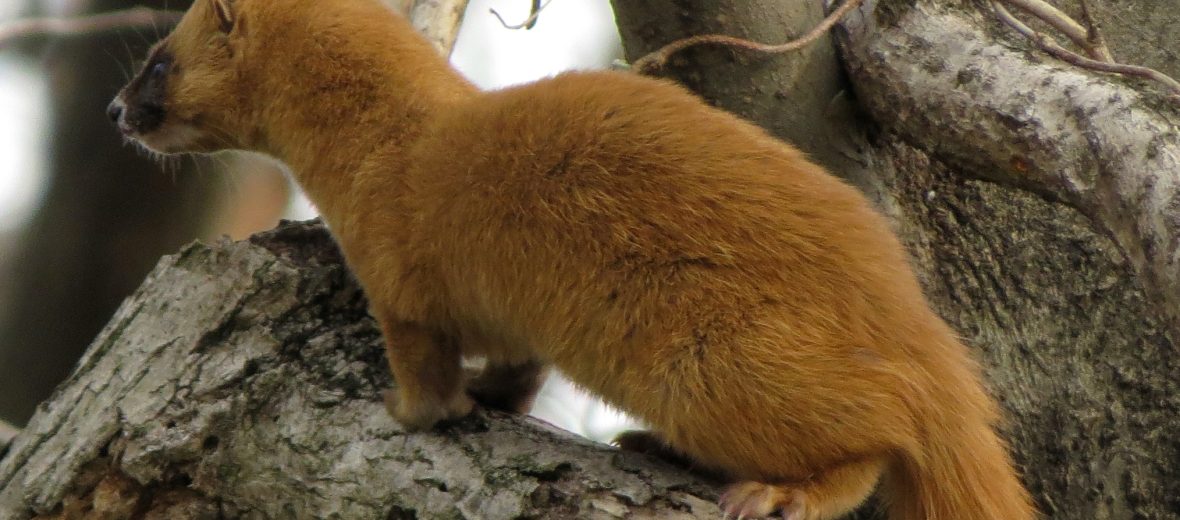
The Japanese weasel can be found on Honshū, Kyūshū, Shikoku, Hokkaidō, Ryukyu, and Sakhalin islands. They prefer forested, grassland, and mountainous regions, near water. These adaptable critters can also be found in villages and suburbs, due to the availability of rodent populations. Due to the threats of habitat destruction, at the hands of housing and urban development, & invasive species (and with them disease), these critters are listed as Near Threatened, by the IUCN. Their numbers are also decreasing.
First the Stats…
Scientific name: Mustela itatsi
Weight: Up to 14.10 ounces
Length: Up to 14 inches, plus up to a 6.7 inch tail
Lifespan: Up to 8 years
Now on to the Facts!
1.) Their taxonomic name, itatsi, is derived the Japanese word “itachi (イタチ)”, which means weasel. Their scientific name means “to carry off mice.”
2.) Japanese weasels are sexually dimorphic in that males are larger than females.
3.) These weasels, like others, are solitary and very territorial.
4.) Like all mustelids, when threatened, they will produce a stinky musk from their scent glands.
5.) They are ferocious predators that will chase down prey, through a variety of obstacles, such as through logs, over and under fences, climbing trees, and even swimming after a prey item.
But wait, there’s more on the Japanese weasel!
6.) Japanese weasels are cathemeral (active during the day and night).
7.) When sleeping, they will rest in tree stumps and logs, lined with soft grasses and feathers.
Did you know…?
The bite of an average weasel can measure up to 85 lbs. per square inch! That is half as strong as a human’s bite. Impressive for such a small critter.
8.) A group of weasels is called a colony, gang, pack, or sneak.
9.) These predators prey on mice, rats, earthworms, frogs, lizards, snakes, insects, and crayfish. They also occasionally feast on berries, fruits, and seeds.
10.) They are polygynous (1 male mates with multiple females).
But wait, there’s still more on the Japanese weasel!
11.) Breeding takes place from May – June.
12.) Females undergo up to a 30 day gestation (pregnancy).
13.) The female will birth up to 12 kits in either June or July.
14.) Foxes, martens, birds of prey, and domestic cats all prey on Japanese weasels. So, they are naturally skittish.
Now a Short Japanese Weasel Video!
Be sure to share & comment below! Also, check out the Critter Science YouTube channel. Videos added regularly!
Want to suggest a critter for me to write about? Let me know here.
Think you know a lot about critters? Try your hand at these fun, free quizzes:



